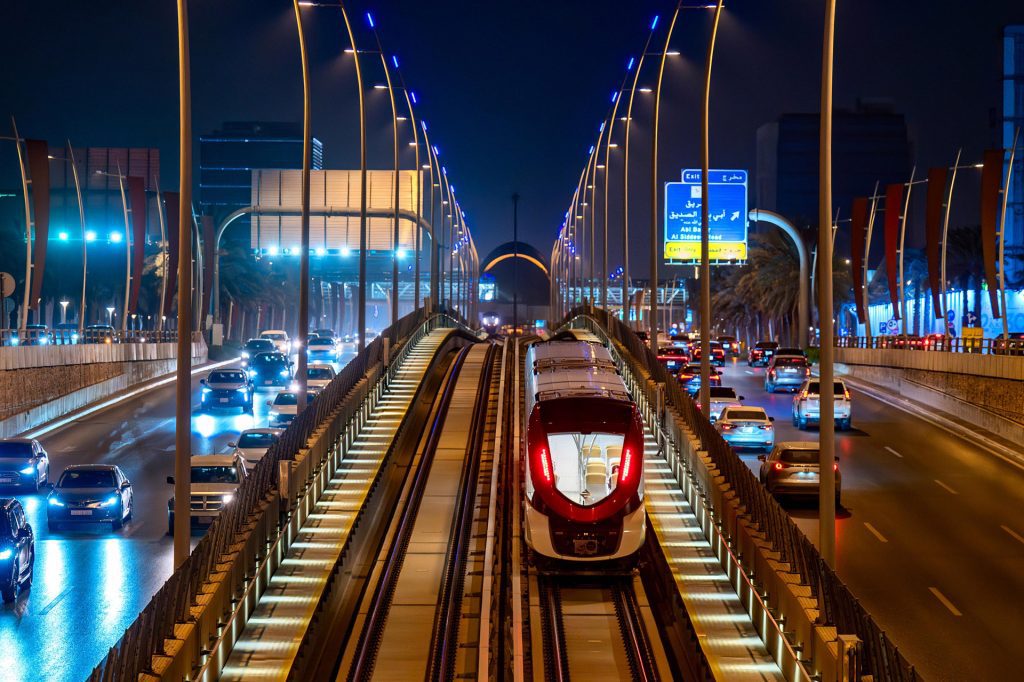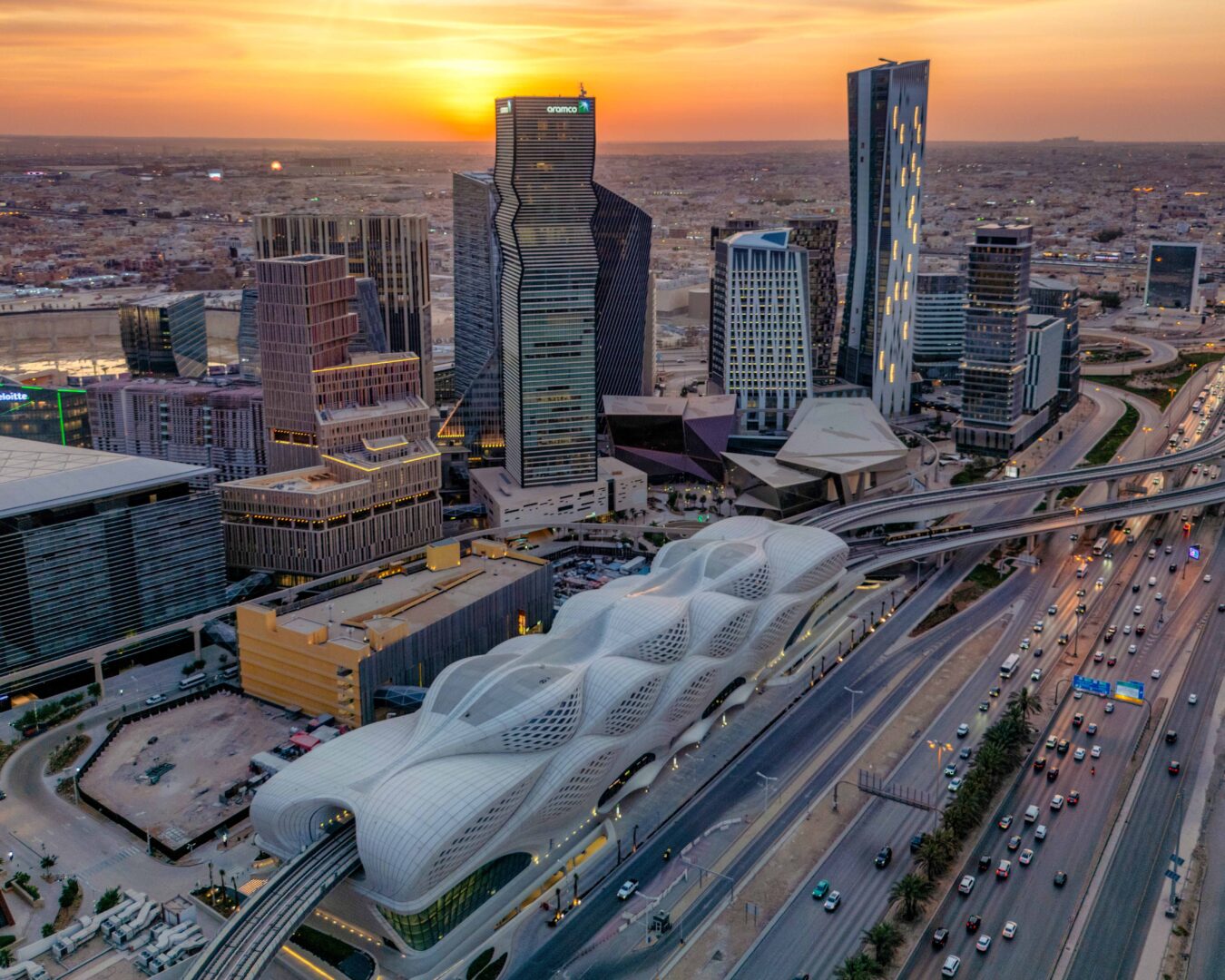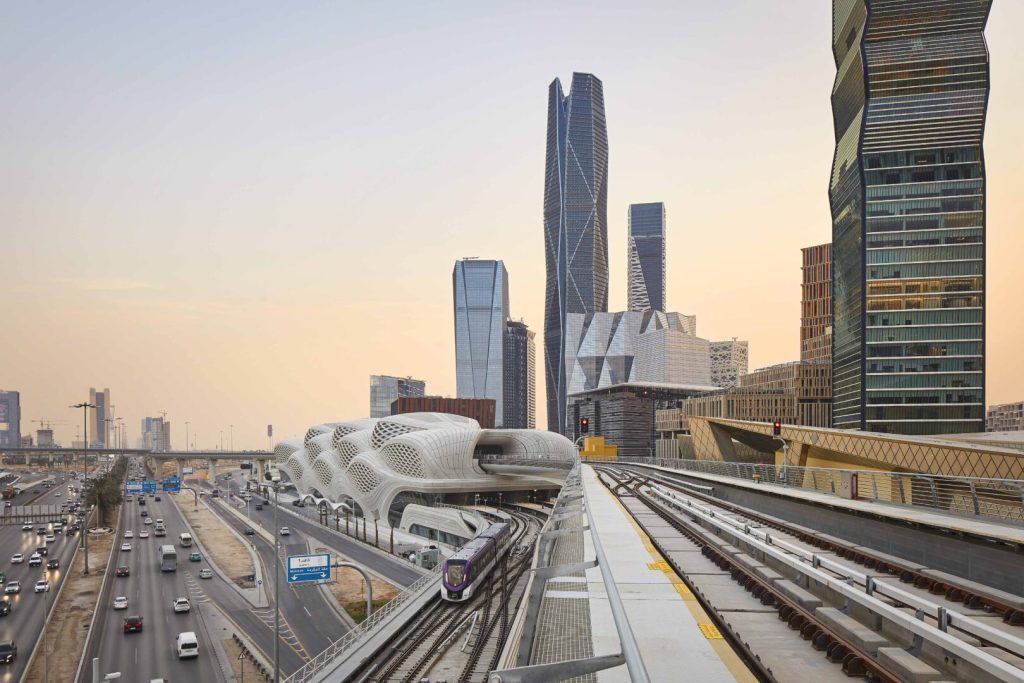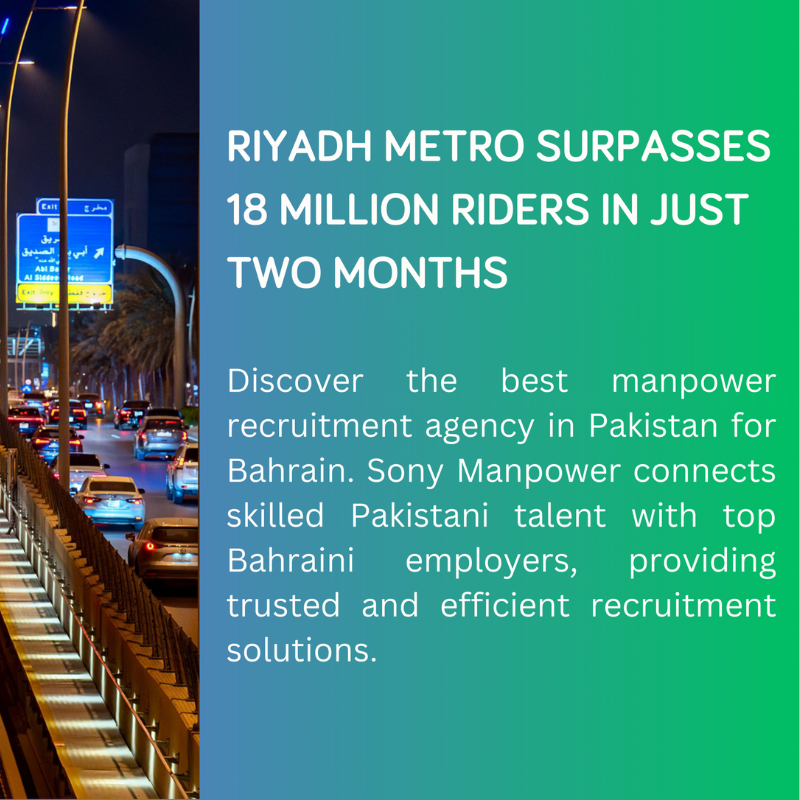Riyadh Metro Surpasses 18 Million Riders in Just Two Months in 2025
The Riyadh Metro has made an incredible start in transforming the way people travel around Saudi Arabia’s capital. In its first two months of operation, over 18 million passengers have used the metro, according to the Royal Commission for Riyadh City. This remarkable milestone shows how quickly the metro is becoming a key part of everyday life for residents and visitors in Riyadh.
A New Era of Public Transport in Riyadh
Riyadh, one of the largest and fastest-growing cities in the Middle East, has long struggled with traffic congestion and pollution. The launch of the Riyadh Metro aims to tackle these issues head-on by offering a modern, efficient, and sustainable alternative to car travel. The six-line metro network, which covers a massive 176 kilometers, is designed to connect various parts of the city and ease the traffic burden.

Since its launch, the metro system has already completed more than 162,000 trips and traveled a total of over 4.5 million kilometers. With 85 stations located at strategic points across the city, the metro has provided a convenient and fast way for people to move around. This is especially important in a city like Riyadh, where traffic jams are a common occurrence.
The Blue Line: The Most Popular Line
The Blue Line, which runs parallel to Olaya Street, has proven to be the busiest so far. It alone has carried nearly 10 million passengers within the first two months. Olaya Street is one of Riyadh’s most important commercial and business areas, meaning this line is highly significant for residents and people visiting the area for work or leisure.

The Blue Line’s popularity highlights the need for efficient public transportation systems in high-traffic areas. As more people rely on public transit instead of driving, the metro helps to alleviate congestion in some of the city’s busiest districts.
King Abdullah Financial District (KAFD) Station: A Hotspot

The King Abdullah Financial District (KAFD) station has emerged as the most popular metro stop. With over 3 million passengers passing through it already, this station is vital for commuters traveling to and from the financial hub of Riyadh. The KAFD station is also unique because it was designed by the world-renowned architect Zaha Hadid. The station’s stunning architecture stands out, making it not only a major transit point but also a work of art that adds to the beauty of the city’s skyline.
Eco-Friendly and Sustainable Transportation
One of the main goals of the Riyadh Metro is to contribute to the city’s sustainability. The metro is designed to reduce carbon emissions by encouraging people to use public transportation instead of driving private cars. This is particularly important in a city like Riyadh, where air pollution has been a growing concern. By reducing the number of cars on the road, the metro is helping to improve air quality and reduce the city’s carbon footprint.
Moreover, the metro features driverless trains, making it more energy-efficient and modern. The air-conditioned cabins provide passengers with a comfortable ride, even during Riyadh’s hot summers. With its clean, energy-efficient technology, the Riyadh Metro is in line with Saudi Arabia’s Vision 2030, which aims to transform the country’s infrastructure, reduce its dependence on fossil fuels, and promote sustainability.
Seamless Integration with Riyadh’s Public Transport
Another key feature of the Riyadh Metro is its integration with the Riyadh Bus system. This allows passengers to switch easily between different modes of public transport, making it simpler to navigate the city. Whether you’re traveling by metro, bus, or even bike, Riyadh’s public transport network is designed to provide smooth and efficient connections across the city.
Passengers can plan their trips using the Darb app, a mobile application that helps people track routes, schedules, and even manage payments. The app allows riders to stay up to date with the latest information on metro operations. It also makes the ticketing process seamless, as riders can use contactless payments to board the trains. This convenience helps to encourage more people to use public transport instead of relying on their cars.
A Transportation System Built for the Future
With a daily capacity of 3.6 million riders, the Riyadh Metro is set to play a huge role in shaping the future of the city. As the population of Riyadh continues to grow, the metro will provide a sustainable solution to meet the increasing demand for public transportation. The metro’s extensive network also helps ensure that people in different parts of the city have easy access to fast and reliable transport.
The Riyadh Metro is not just a public transport system; it is part of a larger vision for the city’s future. It is a model of modern urban planning, focused on improving the quality of life for the people of Riyadh while making the city more sustainable and eco-friendly.
Metro Stations: Architectural Marvels
Beyond its functionality, the Riyadh Metro system also contributes to the architectural landscape of the city. The metro’s stations are designed to be modern, visually appealing, and futuristic. Some stations, like the KAFD Metro Station, have gained international attention due to their unique and cutting-edge designs.

The architecture of the Riyadh Metro stations has been carefully planned to reflect the city’s growth and modernity. The stations combine practicality with stunning design, making the metro an integral part of the city’s identity. The metro is helping Riyadh develop into a world-class city with infrastructure that can compete with major global capitals.
The Future of Riyadh Metro: Expansion Plans
The metro system is still in its early stages, but there are already plans for further expansion. As the network continues to grow, it will provide even more connections, covering more parts of the city and eventually extending to other areas of the Kingdom.
With each new line and station, the Riyadh Metro will further cement its role as a key driver of urban mobility in Saudi Arabia. It will help reduce traffic congestion, lower emissions, and make commuting more convenient for everyone.
Key Facts About Riyadh Metro:
- 18 million passengers in just 2 months.
- 162,000 trips completed.
- Over 4.5 million kilometers traveled.
- 85 stations across Riyadh.
- 176 kilometers of metro lines.
- Daily capacity of 3.6 million riders.
- Blue Line: 10 million passengers.
- KAFD Station: 3 million passengers.
- Designed by Zaha Hadid.
- Driverless trains and air-conditioned cabins.
Riyadh Metro as a Key Part of Vision 2030
The Riyadh Metro is a breakthrough in the city’s efforts to create a more sustainable, modern, and efficient urban environment. With impressive ridership numbers and a focus on eco-friendly transportation, the metro is becoming an essential part of Riyadh’s infrastructure. It aligns with Saudi Arabia’s Vision 2030, helping the country move towards a more sustainable future while improving the daily lives of its citizens. As expansion continues, Riyadh Metro will be an essential driver of urban mobility, making the city more connected and accessible than ever before.
Similar Links: Saudi Arabia Sets 10th Ramadan as Final Date for Hajj



